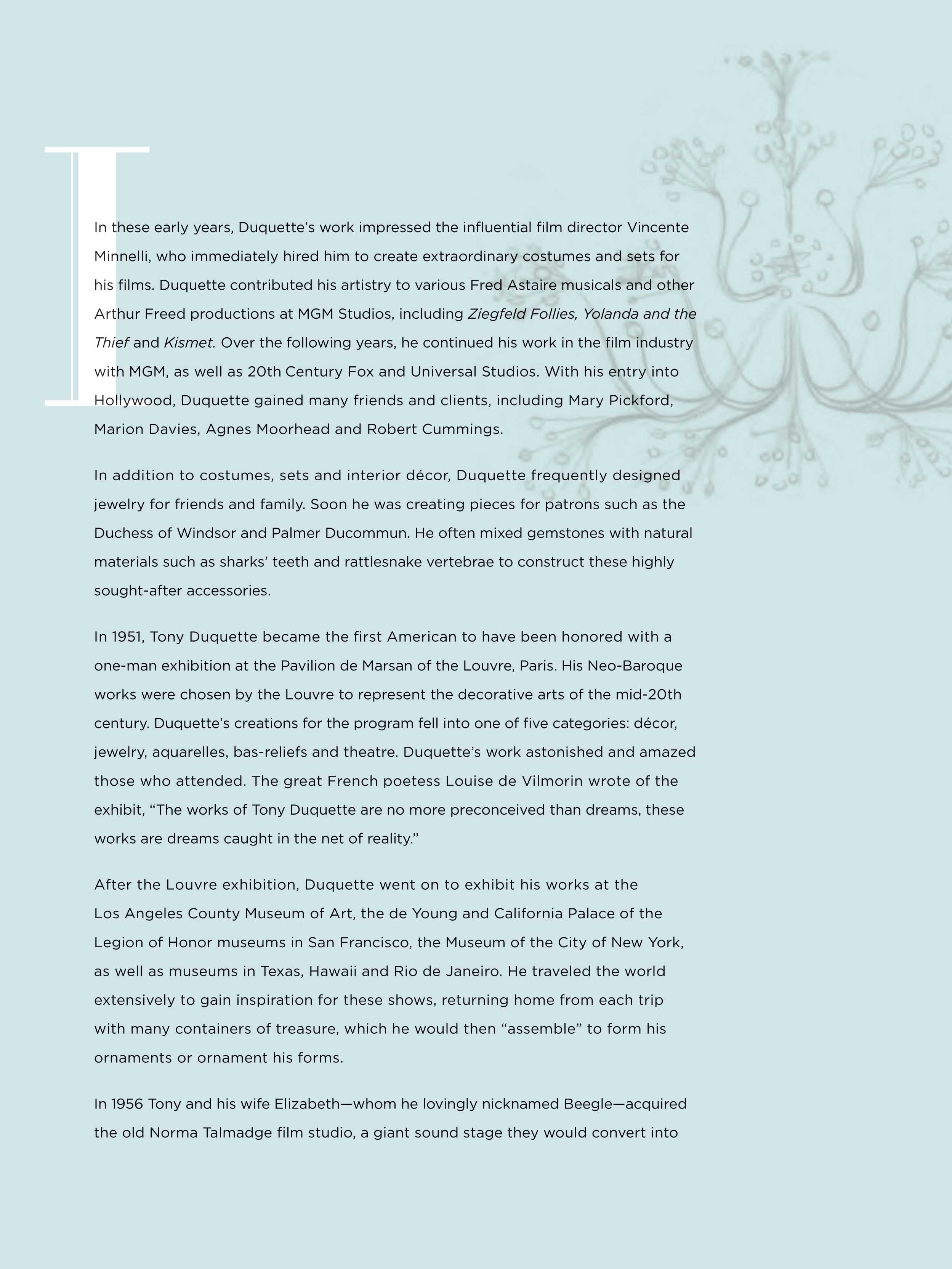In these early years, Duquette’s work impressed the influential film director Vincente
Minnelli, who immediately hired him to create extraordinary costumes and sets for
his films. Duquette contributed his artistry to various Fred Astaire musicals and other
Arthur Freed productions at MGM Studios, including Ziegfeld Follies, Yolanda and the
Thief and Kismet. Over the following years, he continued his work in the film industry
with MGM, as well as 20th Century Fox and Universal Studios. With his entry into
Hollywood, Duquette gained many friends and clients, including Mary Pickford,
Marion Davies, Agnes Moorhead and Robert Cummings.
In addition to costumes, sets and interior décor, Duquette frequently designed
jewelry for friends and family. Soon he was creating pieces for patrons such as the
Duchess of Windsor and Palmer Ducommun. He often mixed gemstones with natural
materials such as sharks’ teeth and rattlesnake vertebrae to construct these highly
sought-after accessories.
In 1951, Tony Duquette became the first American to have been honored with a
one-man exhibition at the Pavilion de Marsan of the Louvre, Paris. His Neo-Baroque
works were chosen by the Louvre to represent the decorative arts of the mid-20th
century. Duquette’s creations for the program fell into one of five categories: décor,
jewelry, aquarelles, bas-reliefs and theatre. Duquette’s work astonished and amazed
those who attended. The great French poetess Louise de Vilmorin wrote of the
exhibit, “The works of Tony Duquette are no more preconceived than dreams, these
works are dreams caught in the net of reality.”
After the Louvre exhibition, Duquette went on to exhibit his works at the
Los Angeles County Museum of Art, the de Young and California Palace of the
Legion of Honor museums in San Francisco, the Museum of the City of New York,
as well as museums in Texas, Hawaii and Rio de Janeiro. He traveled the world
extensively to gain inspiration for these shows, returning home from each trip
with many containers of treasure, which he would then “assemble” to form his
ornaments or ornament his forms.
In 1956 Tony and his wife Elizabeth—whom he lovingly nicknamed Beegle—acquired
the old Norma Talmadge film studio, a giant sound stage they would convert into
Black
Angle@K
PMS 9040 C
SOLID
Warm Gray 4
Angle@K
115973BK_r2_67007_TDuquette_v19.indd 6
9/8/08 6:40:13 PM


